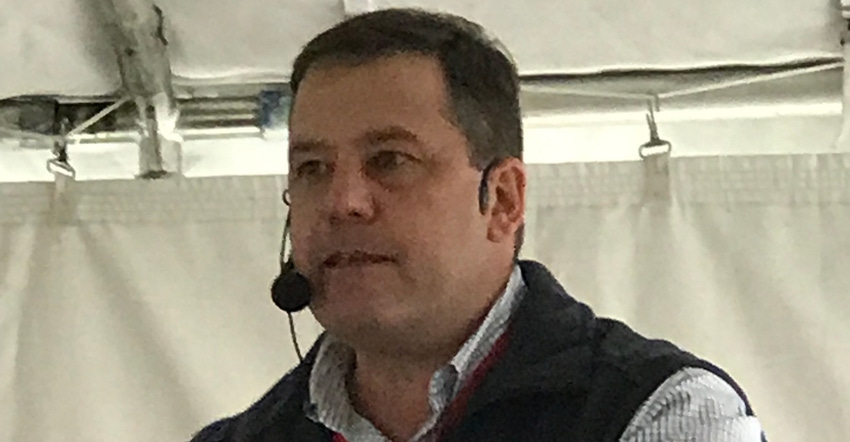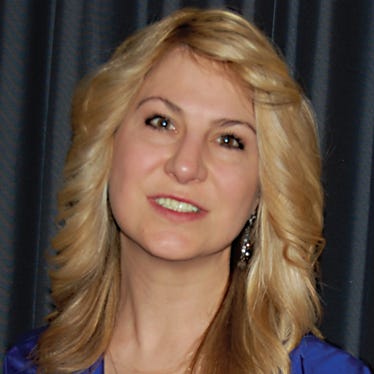
Once carbon markets get established and develop a verification process with transparency, there are ways for everybody to get paid for doing something on their farm, predicts Mike Estadt, an Ohio State University Extension educator who has studied carbon market agreements.
Supply and demand will dictate the payment, but he thinks it’s somewhere between $15 and $20 per acre in a no-till system with cover crops. It could go as high as $40, he said during an educational program at Ohio Farm Science Review in September.
Estadt praised Dr. Rattan Lal, who is part of Ohio State University’s carbon team, for leading the charge into carbon markets. Research suggests farmers implementing cover crops and a no-till system can expect to sequester, on average, about 1 metric ton of carbon per acre, per year.
Studies report about 1% of U.S. farmers have signed a carbon contract, while 3% are considering it. “That leaves a lot of acres out there not enrolled,” Estadt said. “Price will help get more acres on board. But, right now, a lot of people are just kind of wait and see — and that’s my advice.”
Carbon buyers
There are two groups of buyers. Emitters include entities such as utility companies, manufacturers and processors burning carbon-based fuels and emitting carbon dioxide or nitrous oxide into the atmosphere.
They either reduce their emissions or find somebody else to store the carbon dioxide equivalent as an offset. The idea is to achieve carbon neutrality.
Today’s consumer-driven market is putting pressure on companies — the other group of buyers — to achieve that zero balance. “Every major Fortune 500 company out there is wanting to claim carbon neutrality by 2035 or 2050,” Estadt said.
The young consumer is concerned about the environmental footprint of their consumer dollar. So those companies are out there asking farmers through these aggregators to sequester carbon by purchasing credits.
What they’re looking for
“Additionally” is a term farmers need to understand, because aggregators are the middle people not interested in the farmer who has been no-tilling for 25-30 years. Those folks have already sequestered a great amount of carbon.
“They’re looking for farmers in tillage systems and not using cover crops,” Estadt said. “Practices that will make a good candidate for a carbon farmer are things that will make soils better, too.”
Another term to take note of is “permanence.” Private companies purchasing carbon credits want to know the farmer-sequestered carbon is going to be there for a long time, Estadt said. “That leads to a lot of questions about what happens if the contract is broken or not completely fulfilled.”
What will happen if a farmer did everything as agreed and the verification shows targets were not met? “We don’t know until it's been litigated,” Estadt said.
Weather is the uncontrolled variable. “If it’s a wet fall, and I have to go rut my corn out, followed by a disking in the spring, what happens then?” he said. “It will likely result in a reduced or nonpayment. What if there’s a drought, and plants don’t grow or develop a robust root system? And, if there’s a lot of flooding, saturated soils will lose carbon. There's so many things that go into the equation, beyond our control.”
Data transfer
Expect to turn over your data in a carbon contract. “There will be a data transfer requirement because there's no way they're going to be able to soil sample every field enrolled,” Estadt said. “They’re going to want to know how many field passes were made, harvest data and everything you did on that farm.”
Soil sampling will likely be done at the beginning of the contract to develop a baseline. Models will be used to estimate the potential amount of carbon stored to enroll into a program.
From that point forward, aggregators will use computer modeling, some soil sampling, hyperspectral imaging and other technologies to build algorithms to make sure the farmer did what was promised and carbon was sequestered.
The value
Plants take carbon dioxide out of the air, and in the presence of sunshine and water, go through a process called photosynthesis, which makes carbohydrates. Those carbohydrates are stored in the plant. “The goal is to increase organic matter through the accumulation of root mass and residue to capture carbon,” Estadt said.
Tillage of any kind will likely be prohibited because tilling the soil would allow oxygen to become present. When two molecules of oxygen hook up with one molecule of carbon, that produces carbon dioxide, which is then released into the atmosphere.
Practices will be examined closely “I talked to a gentleman with a large livestock feeding system who is using livestock manures instead of synthetic fertilizer,” Estadt said. “He is an excellent candidate for a carbon market because if you're using natural fertilizer, you're not using the synthetic fertilizers, which are manufactured with natural gas.”
There is an opportunity for stacking programs. “If you’re enrolled in a program through the Department of Agriculture and you're getting a payment, you could also enroll your farm into a carbon program,” Estadt said. “You could potentially double your money, or at least help offset the cost of the adoption of those practices making you eligible for carbon programs.”
About the Author(s)
You May Also Like






